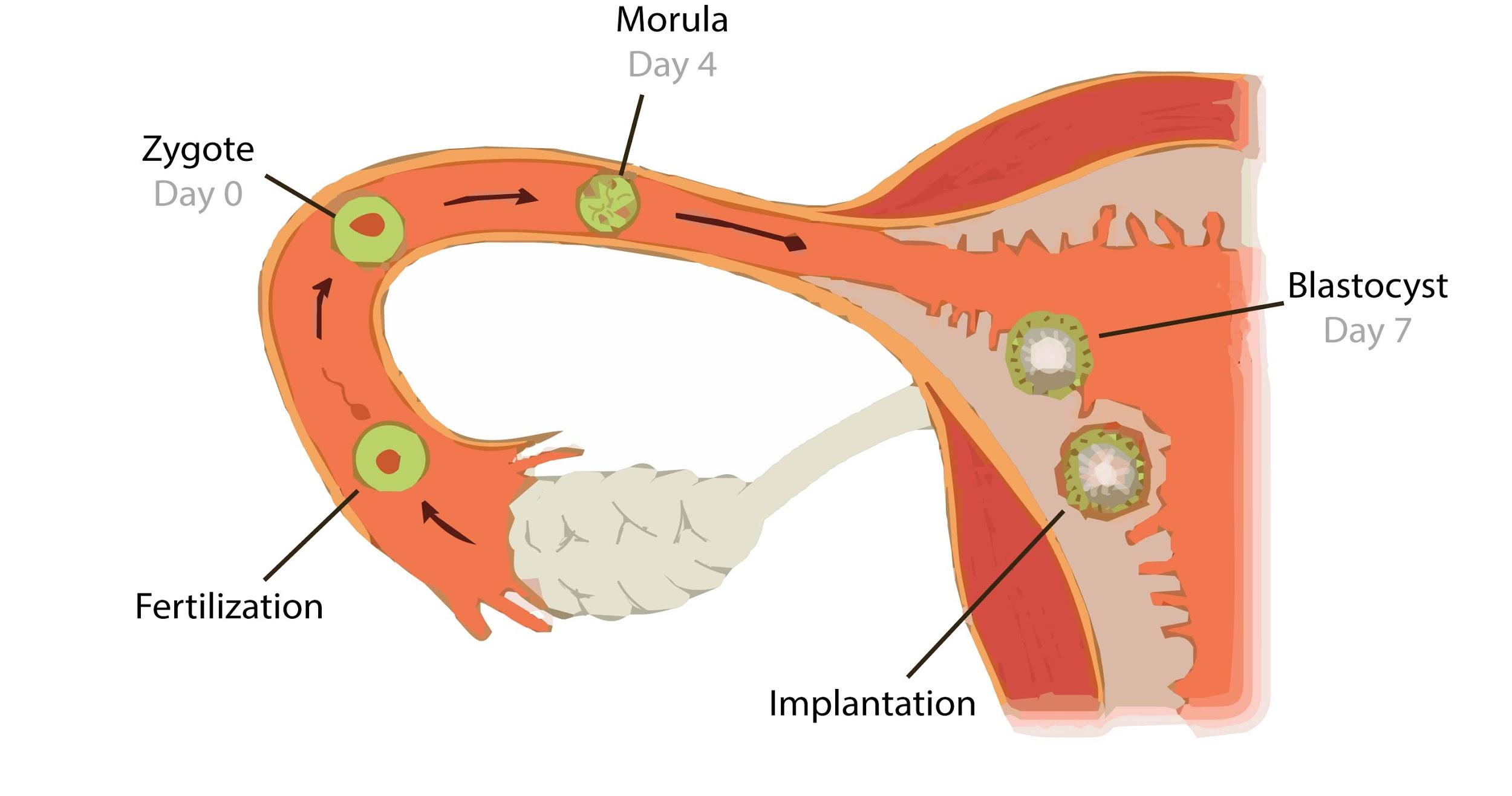
In the human female, the blastocyst
(a) Gets implanted in the endometrium by the trophoblast cells.
(b) Forms placenta even before implantation.
(c) Gets implanted into the uterus 3 days after ovulation.
(d) Gets nutrition from uterine endometrial secretion only after implantation.
Answer
492.3k+ views
Hint: Implantation is known as the process in which zygote after reaching more than 32 cell stages gets embedded into the uterus to form a structure known as the placenta. For this, the endometrial lining of the uterus should be present.
Complete Step by Step Answer:
The process of implantation is as follows:
- Zygote after fertilization undergoes division to form a 2- celled stage, 4- celled stage, 8- celled stage, etc. but does not increase in size.
- When it is at the 32- celled stage the cells which are known as blastomeres are arranged in the form of outer trophoblast and inner cell mass.
- There is also the presence of a fluid- filled cavity known as blastocoel.
- The trophoblast after hatching combines with the chorionic villi of the endometrium to form the placenta.

So, the correct option is 'Gets implanted in endometrium by the trophoblast cells'.
Additional information: Let us know more about the placenta:
The placenta is the structural and functional unit between the developing fetus and the mother's body.
The function of the placenta is to transport the mother's nutrients and oxygen to the fetus and remove oxygen and excretory products away from the fetus.
Placenta also acts as an endocrine tissue to help regulate the mother's body during pregnancy. It releases hCG, hPL, estrogens, and progesterone.
Note:
- Hatching is the process by which the blastocyst breaks open the covering of zona pellucida around it to implant itself in the uterus.
- The presence of blastocyst is a characteristic of mammals.
- Stem cells present in the inner cell mass are capable of giving rise to all tissues in the body.
Complete Step by Step Answer:
The process of implantation is as follows:
- Zygote after fertilization undergoes division to form a 2- celled stage, 4- celled stage, 8- celled stage, etc. but does not increase in size.
- When it is at the 32- celled stage the cells which are known as blastomeres are arranged in the form of outer trophoblast and inner cell mass.
- There is also the presence of a fluid- filled cavity known as blastocoel.
- The trophoblast after hatching combines with the chorionic villi of the endometrium to form the placenta.

So, the correct option is 'Gets implanted in endometrium by the trophoblast cells'.
Additional information: Let us know more about the placenta:
The placenta is the structural and functional unit between the developing fetus and the mother's body.
The function of the placenta is to transport the mother's nutrients and oxygen to the fetus and remove oxygen and excretory products away from the fetus.
Placenta also acts as an endocrine tissue to help regulate the mother's body during pregnancy. It releases hCG, hPL, estrogens, and progesterone.
Note:
- Hatching is the process by which the blastocyst breaks open the covering of zona pellucida around it to implant itself in the uterus.
- The presence of blastocyst is a characteristic of mammals.
- Stem cells present in the inner cell mass are capable of giving rise to all tissues in the body.
Latest Vedantu courses for you
Grade 11 Science PCM | CBSE | SCHOOL | English
CBSE (2025-26)
School Full course for CBSE students
₹41,848 per year
Recently Updated Pages
Master Class 4 Maths: Engaging Questions & Answers for Success

Master Class 4 English: Engaging Questions & Answers for Success

Master Class 4 Science: Engaging Questions & Answers for Success

Class 4 Question and Answer - Your Ultimate Solutions Guide

Master Class 11 Economics: Engaging Questions & Answers for Success

Master Class 11 Business Studies: Engaging Questions & Answers for Success

Trending doubts
What is the difference between resemblance and sem class 12 social science CBSE

What is the Full Form of PVC, PET, HDPE, LDPE, PP and PS ?

Draw ray diagrams each showing i myopic eye and ii class 12 physics CBSE

Why do the transition elements have higher enthalpies class 12 chemistry CBSE

What are the advantages of parallel combination over class 12 physics CBSE

What are the causes of overloading class 12 physics CBSE




